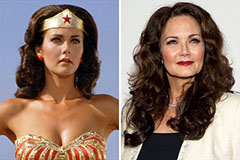Media has actually undertaken a remarkable change over the centuries, developing from easy forms of communication to facility systems that form international culture. This progression shows humanity's desire to share tales, concepts, and info on progressively wider scales. Understanding the evolution of media discloses not just technological developments but also the extensive ways in which interaction affects culture and society.
The tale of media starts with print. The innovation of the printing press by Johannes Gutenberg in the 15th century changed the means info was disseminated. Before this, knowledge was restricted to handwritten manuscripts available only to elites. The printing machine made books and pamphlets widely readily available, spurring the Renaissance, the Reformation, and the Scientific Change. Print media's capability to spread ideas swiftly and effectively made it the foundation of mass interaction, altering the course of background by equipping individuals with understanding.
The 19th century saw the rise of mass print media, consisting of newspapers and magazines. Breakthroughs in printing innovation allowed for faster manufacturing and broader circulation. Newspapers came to be a staple of every day life, informing people regarding current occasions, politics, and society. The rise of journalism as a career underscored the media's expanding function fit public opinion. Publications accommodated particular niche rate of interests, further branching out the landscape of print media. This era strengthened media's role as a crucial tool for education and learning, entertainment, and social discourse.
The 20th century brought radio and television, which changed the means people eaten information and amusement. Radio, with its ability to relay live occasions, brought the world better with each other. Households collected around radios to listen to information, music, and dramatization, producing common cultural experiences. Tv took this a step additionally by including visuals to audio, making it the leading form of information media by mid-century. Legendary moments, such as the moon touchdown and major political speeches, were relayed live, showcasing the power of media to create collective memories and shape international consciousness.
The electronic change of the late 20th and early 21st centuries has actually probably been one of the most transformative era in media history. The net made information available to any person with a connection, breaking down geographical barriers and democratizing communication. Social media site platforms like Facebook, Twitter, and New TV shows Instagram introduced brand-new methods for people to share their voices and get in touch with others. Streaming services have redefined amusement, giving audiences control over what they watch and when. Digital media's interactivity has not only changed intake but also blurred the lines between manufacturers and customers, making media a participatory experience.
Regardless of its benefits, the evolution of media has likewise brought obstacles. The quick spread of misinformation, the erosion of privacy, and the increase of echo chambers highlight the darker side of contemporary media. As modern technology remains to advance, society faces the recurring task of adjusting to its influence while resolving these obstacles. By checking out media's past, we can much better navigate its future and harness its possibility for favorable modification.
 Jake Lloyd Then & Now!
Jake Lloyd Then & Now! Ralph Macchio Then & Now!
Ralph Macchio Then & Now! Molly Ringwald Then & Now!
Molly Ringwald Then & Now! Tiffany Trump Then & Now!
Tiffany Trump Then & Now! Lynda Carter Then & Now!
Lynda Carter Then & Now!